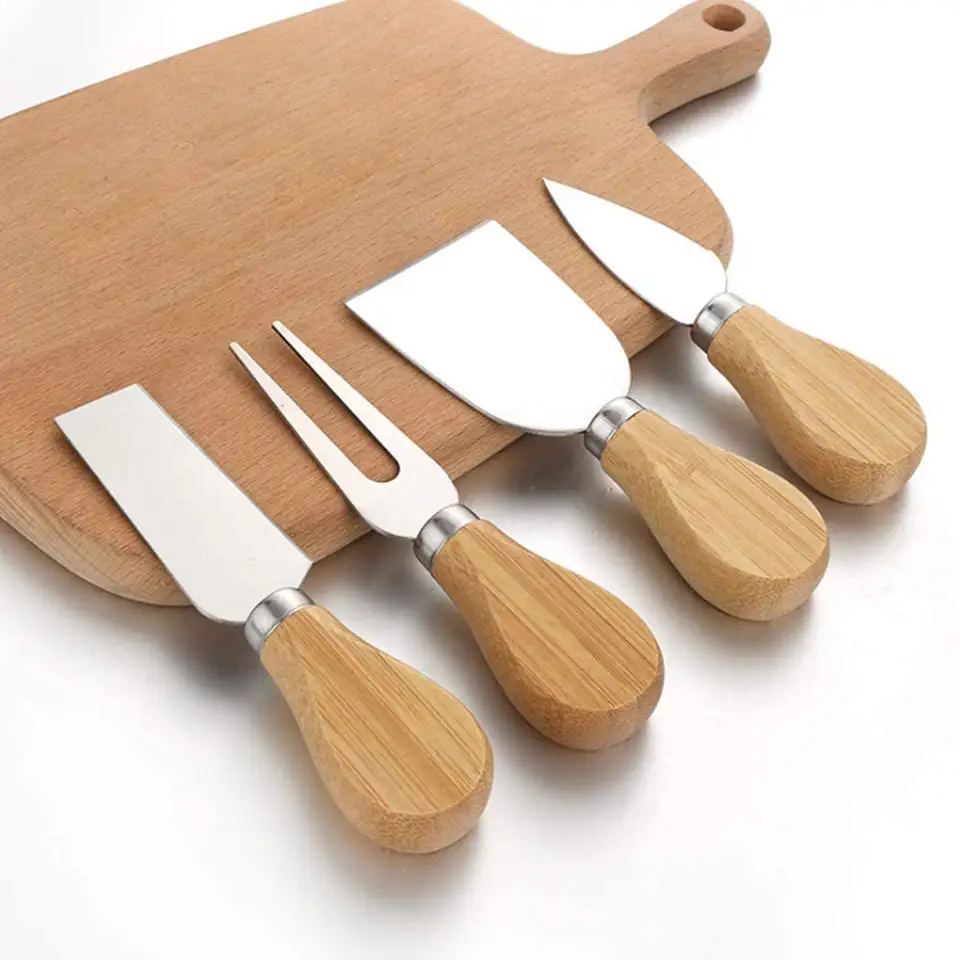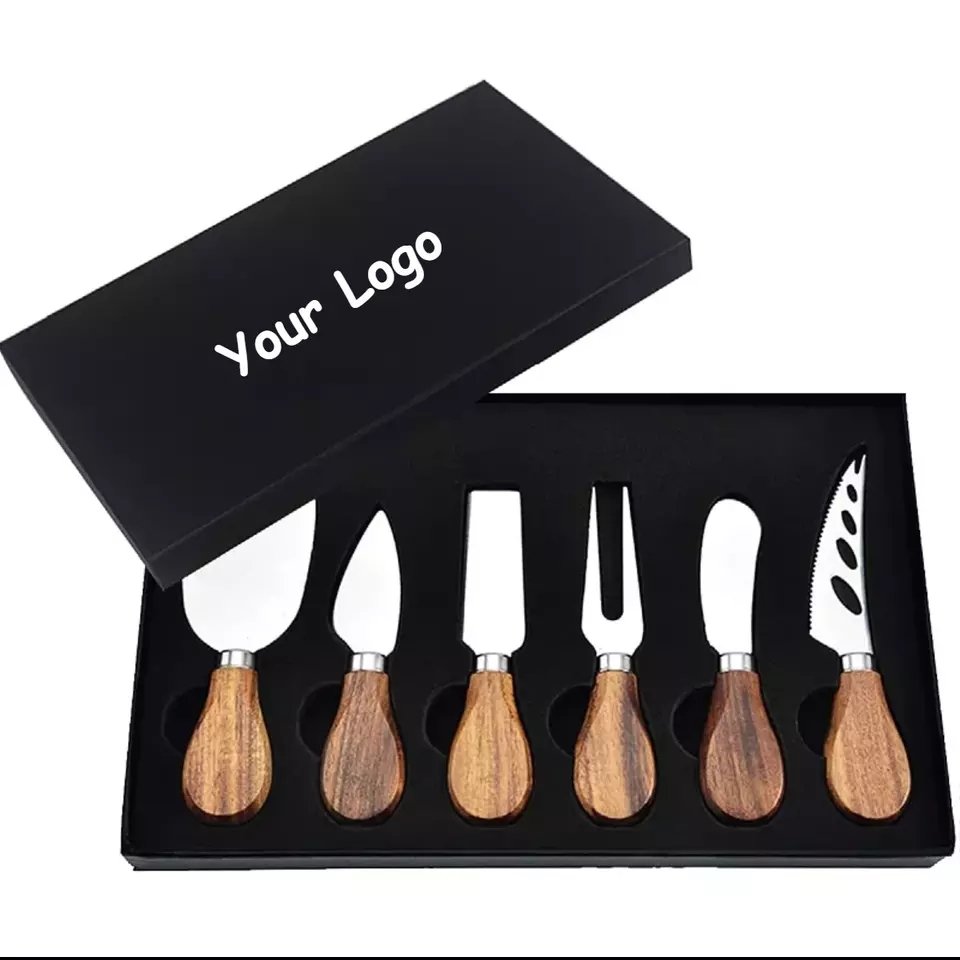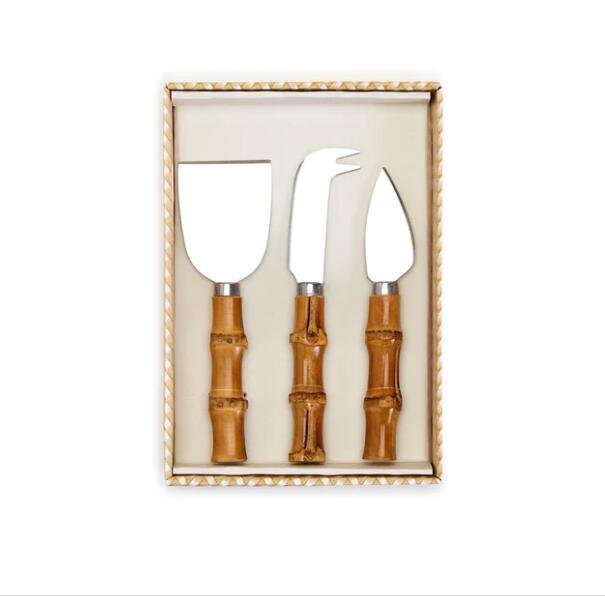Choosing cutlery seems simple, but poor quality metal can ruin meals, frustrate diners, and cost more in replacements.
Cutlery is typically made from stainless steel, silver, titanium, or occasionally plastic, but stainless steel is the best for everyday use due to its durability and affordability.
Understanding different metals used for cutlery can greatly improve your dining experience, ensuring both durability and beauty on your table. Let’s dive deeper into the specifics.
Table of Contents
What is the best metal for cutlery?
Metal cutlery wears out easily, rusts quickly, or feels uncomfortable when holding—poor choice brings frustration.
Stainless steel is the best metal for cutlery due to its durability, resistance to corrosion, affordability, and ease of maintenance, making it ideal for daily use and commercial applications.
Evaluating metals for cutlery
When considering which metal is truly best, we must assess several aspects:
Cost, Durability, and Maintenance
Let’s compare common metals using a clear, structured table:
| Material | Cost | Durability | Maintenance |
|---|---|---|---|
| Stainless Steel | Affordable | Excellent | Easy |
| Silver | High | Good | Difficult |
| Titanium | Very High | Excellent | Easy |
| Plastic | Low | Poor | Easy |

Stainless Steel – Ideal Choice
I prefer stainless steel because it’s tough enough for daily usage and simple to clean. Silver is beautiful but tarnishes quickly and needs regular polishing. Titanium is durable and corrosion-resistant, perfect for outdoor or specialty usage, but significantly more expensive. Plastic is budget-friendly but unsuitable for long-term usage or formal dining situations.
Environmental Impact
Considering sustainability, stainless steel and titanium are recyclable and environmentally friendly options compared to plastic. Plastic cutlery contributes significantly to pollution, so for long-term environmental responsibility, metal options are preferable.
Each metal type has clear strengths and weaknesses. From my decade of experience in cutlery design and marketing, stainless steel clearly stands out for regular use, blending cost-effectiveness, functionality, and sustainability.
What kind of steel is used in cutlery?
Using the wrong steel can lead to quick dulling or rusting, making your cutlery short-lived.
The primary types of steel used in cutlery are stainless steels like 18/10, 18/8, and 18/0, named for their chromium and nickel percentages, ensuring strength, rust resistance, and appearance.
Common Grades Explained
Different grades of stainless steel significantly affect performance. Here’s how they stack up:
| Grade | Chromium % | Nickel % | Properties | Use Case |
|---|---|---|---|---|
| 18/10 | 18% | 10% | Highest rust resistance, excellent shine | Premium flatware |
| 18/8 | 18% | 8% | Good rust resistance, shiny | Mid-range cutlery |
| 18/0 | 18% | 0% | Lower rust resistance, more affordable, slightly magnetic | Budget-friendly cutlery |

Choosing the Right Steel
I often recommend 18/10 stainless steel for premium cutlery because of its higher nickel content that greatly enhances rust resistance and maintains its shine. Mid-range customers might prefer 18/8 as it balances cost and quality effectively. For budget-sensitive customers, 18/0 works well, though it requires more careful maintenance.
What is cutlery usually made of?
Misunderstanding common materials can lead to incorrect choices and poor product experiences.
Cutlery is usually made from stainless steel due to its balance of durability, cost-efficiency, and ease of maintenance. Other materials like silver, titanium, and plastic are also used for specific needs.
Material Popularity and Usage
Common materials have clear usage scenarios:
| Material | Popularity | Typical Usage |
|---|---|---|
| Stainless Steel | Most Popular | Home and restaurant daily use |
| Silver | Less Popular | Formal occasions, heirloom collections |
| Titanium | Niche Popularity | Outdoor dining, travel, medical environments |
| Plastic | Widely Popular | Casual events, picnics, disposable utensils |
Selecting the Right Material
My customers regularly select stainless steel for standard usage due to its cost, appearance, and practicality. Silver, although beautiful, isn’t practical for frequent use due to maintenance demands. Titanium, highly robust and corrosion-resistant, suits outdoor enthusiasts and specific culinary uses. Plastic is ideal for convenience and disposability but isn’t sustainable or durable.
What grade of steel is best for cutlery?
Choosing incorrect steel grades results in increased maintenance and decreased durability.
The best steel grade for cutlery is typically 18/10 stainless steel due to superior corrosion resistance, durability, and premium appearance suitable for long-lasting usage.
Steel Grades and Practical Applications
Detailed comparison highlights clear practical applications:
| Steel Grade | Strength | Corrosion Resistance | Typical Application |
|---|---|---|---|
| 18/10 | Highest | Excellent | Premium dining, luxury sets |
| 18/8 | Good | Good | Everyday household use |
| 18/0 | Moderate | Fair | Budget-friendly options |
Practical Advice
In my experience with cutlery manufacturing, 18/10 consistently outperforms other grades in longevity and appearance, making it worthwhile despite its slightly higher cost. For restaurants or everyday heavy-duty use, the slightly cheaper 18/8 might balance costs effectively. For casual usage, such as cafeterias or temporary setups, 18/0 adequately serves without unnecessary expenditure.
What steel do chefs use?
Using inappropriate steel can hinder chefs’ performance by slowing down cutting tasks or dulling quickly.
Professional chefs primarily use high-carbon stainless steel for knives due to its excellent sharpness retention, durability, and ease of sharpening, which is essential for continuous kitchen use.
Chef Requirements
Chefs have distinct requirements:
| Requirement | High-Carbon Stainless Steel | Regular Stainless Steel |
|---|---|---|
| Sharpness | Excellent | Moderate |
| Durability | Excellent | Excellent |
| Rust Resistance | Moderate | High |
| Ease of Sharpening | Excellent | Moderate |
Choosing Knives for Chefs
My chef customers often prefer high-carbon stainless steel because it stays sharp longer and sharpens easily, crucial in professional kitchens. While regular stainless steel resists rust better, chefs value blade performance more. Proper maintenance of high-carbon knives can easily offset concerns regarding corrosion, making them highly practical for professional culinary environments.
Is expensive cutlery worth it?
Everyone likes a good deal. But when cheap cutlery breaks, rusts, or gets returned by customers, you pay more in the long run.
Expensive cutlery can be worth the price if it offers durability, better materials, and a better experience for the end user.
Why some cutlery costs more
Let’s break it down. The price of cutlery comes from a few key areas:
| Factor | Low-Cost Cutlery | High-Cost Cutlery |
|---|---|---|
| Material Grade | 201 or mixed steel | 304, 316, or even silver |
| Thickness | Thin (0.5–1.0 mm) | Thick (2.0–3.0 mm) |
| Craftsmanship | Stamped, rough finish | Forged, polished finish |
| Longevity | Wears out fast | Lasts for many years |
| Feel | Light, sometimes hollow handle | Heavy, solid, premium feel |
Some buyers focus only on unit price, but my long-term clients—especially branding businesses like Jacky’s in Germany—look at *total cost over time*. A premium-looking fork that stays beautiful through 500 washes earns customer loyalty and reduces complaints.
Use case matters
I always ask my clients two questions:
– Where will your customer use the cutlery?
– Do they care about appearance after six months?
If it’s for high-end restaurants, wedding gifts, or branded tableware, cheap options aren’t worth it. But if it’s for fast-moving promotions or disposable catering, then a lower-cost metal might make sense.
How can you tell if cutlery is good quality?
Customers don’t always know what makes cutlery good—they just feel it in their hands. As suppliers, we need to explain what makes one knife better than another.
Good cutlery feels solid, resists rust, and has smooth, clean finishing with no sharp or uneven edges.
What makes cutlery “good”?
Let’s go deeper:
1. Material tells the truth
Check the grade. 18/10 stainless steel (304) has 18% chromium and 10% nickel. This combination gives better shine and rust resistance.
2. Finish and polish
A smooth mirror or satin finish shows care. Inconsistent shine, sharp edges, or visible seams are red flags.
| Quality Feature | Low-Quality Cutlery | High-Quality Cutlery |
|---|---|---|
| Steel Type | Often 201 or mixed | 304, 316 stainless steel |
| Weight | Too light, feels cheap | Balanced, solid in hand |
| Surface | Dull, pitted, uneven | Mirror or satin smooth finish |
| Joints | Visible welding lines | Seamless or finely joined |
| Edges | Sharp, rough, uncomfortable | Rounded, smooth, safe to touch |
3. Dishwasher resistance
If you notice brown stains or black spots after washing, it means the cutlery isn’t stainless enough—or the polish was too thin.
4. Feel in hand
This is subjective, but real. A good spoon feels balanced. A poor one feels hollow or clunky. I always ask customers to *test grip and balance* when sampling.
Cutlery isn’t just tools—it’s part of the dining experience. And people *remember* the feeling.
What cutlery doesn’t rust?
One of the top complaints I get from new clients: “Our forks rusted in just one week. Why?”
Cutlery made with high-chromium and nickel stainless steel, like 304 or 316, is highly resistant to rust, especially when polished well.
The science behind rust
Rust happens when iron reacts with oxygen and moisture. Chromium in stainless steel forms an invisible layer that protects the metal from oxidation. Nickel helps stabilize the structure.
| Steel Type | Chromium % | Nickel % | Rust Resistance |
|---|---|---|---|
| 201 | ~16% | <1% | Low |
| 304 (18/10) | 18% | 10% | High |
| 316 (18/10 + Mo) | 18% | 10% | Excellent |
How to keep rust away
Even the best metal can rust under bad conditions. Here are some practical tips:
– Don’t leave wet cutlery in a closed dishwasher overnight.
– Use mild detergents.
– Avoid lemon-based or high-salt cleaners.
For clients selling to coastal regions or cruise ship suppliers, I always recommend 316 stainless steel. It’s more expensive, but in humid environments, it saves you from disaster.
What is the highest grade stainless steel cutlery?
I often get asked: “What’s the best metal you can offer?” My answer depends on the customer’s use case.
The highest grade commonly used in stainless steel cutlery is 316, also known as marine-grade stainless steel.
Comparing stainless steel grades
Let’s compare the most common ones in the industry:
| Grade | Nickname | Composition | Best For | Price |
|---|---|---|---|---|
| 201 | Budget Steel | Cr 16%, Ni <1% | Promotional sets, low-end markets | ★ |
| 430 | Magnetic Steel | Cr 17%, Ni 0% | Disposable cutlery, hotel backup sets | ★★ |
| 304 (18/10) | Standard High Quality | Cr 18%, Ni 10% | Mid to high-end restaurants, home use | ★★★ |
| 316 (18/10 + Mo) | Marine-Grade | Cr 18%, Ni 10%, Mo 2% | Coastal areas, yachts, luxury brands | ★★★★ |
| 410 / 420 | Knife-Grade Steel | Cr 13%, High Carbon | Knives (sharp, hard, but less anti-rust) | Varies |
When to use 316
I don’t recommend 316 unless your customer faces very harsh conditions or needs to market a “luxury” message. It costs 20-30% more than 304, and most end users won’t notice the difference unless they use it daily.
But in the right situation? It’s unbeatable.
What is the difference between flatware and cutlery?
Let’s clear this up once and for all. The terms “flatware” and “cutlery” get thrown around like they mean the same thing—but they don’t always.
Cutlery usually refers to knives, forks, and spoons used for eating, while flatware can include these plus serving pieces.
A global misunderstanding
Different countries use these words differently:
| Region | “Cutlery” Means | “Flatware” Means |
|---|---|---|
| UK | Knives, forks, spoons (standard) | Same as cutlery, or all table utensils |
| US | Sometimes only knives | All eating utensils (no plates) |
| China | All eating utensils | Rarely used term |
| Germany | Besteck (full cutlery set) | Term “flatware” rarely used |
For me as a Chinese supplier, I use “cutlery” in most product catalogs. But when working with American buyers, they often ask for “flatware sets” or “place settings.
Why the confusion matters
If your product title says “18/10 cutlery set,” but your customer expects a ladle, cake fork, and serving spoon too, they’ll be disappointed.
That’s why I always clarify:
– How many pieces?
– Which functions?
– Any special serving items?
A little language tweak can save a big headache.
Which is better, 18-10 or 18 0 stainless steel flatware?
Some say 18-10 sounds premium, others say 18-0 is more practical. So, which one actually makes better cutlery?
18-10 stainless steel is generally better than 18-0 for flatware. It’s more resistant to rust and has a shinier appearance.
Let’s dive deeper: What do the numbers mean?
“18-10” and “18-0” refer to the composition of stainless steel:
| Grade | Chromium % | Nickel % | Corrosion Resistance | Shine | Magnetism |
|---|---|---|---|---|---|
| 18-10 | 18% | 10% | Excellent | High gloss | Non-magnetic |
| 18-0 | 18% | 0% | Good | Moderate shine | Magnetic |
Nickel makes the difference
Chromium adds corrosion resistance. Nickel adds luster and improves durability. 18-10 contains both. 18-0 cuts costs by removing nickel, which can save money for large-scale buyers but may sacrifice longevity and shine.
Practical considerations
| Buyer Type | Recommended Grade | Why It’s a Good Fit |
|---|---|---|
| Budget Buyers | 18-0 | More affordable, magnetic, commonly used in fast food and casual dining |
| Premium Buyers | 18-10 | Heavier, smoother, elegant — ideal for home use or upscale restaurants |
Some people are allergic to nickel. For them, 18-0 is the safer option. But for the majority, 18-10 is perfectly safe and offers better long-term performance.
Is titanium better than stainless steel for cutlery?
Titanium sounds fancy. Some brands market it as indestructible. But is it really better?
Titanium cutlery is lighter and more corrosion-resistant, but stainless steel is still the better choice for daily use.
Let's explore: When does titanium make sense?
| Material | Weight | Corrosion Resistance | Strength | Cost | Daily Usability |
|---|---|---|---|---|---|
| Stainless Steel | Moderate | High | High | Affordable | Excellent (daily use) |
| Titanium | Very Light | Extremely High | Moderate | Expensive | Niche (outdoor, travel) |
Titanium is good for travel, not the dinner table
Titanium cutlery is ultralight and doesn’t corrode — perfect for camping or backpacking. But it’s not cost-effective for regular household use. It’s also harder to manufacture in polished shapes, and it doesn’t have the same elegant shine as stainless steel.
Is titanium safer?
Yes, titanium is biocompatible and won’t leach anything. But so is good-quality stainless steel. The real safety concern lies in coating and finishing, not the metal itself.
Verdict?
Unless you’re backpacking in the mountains or trying to impress with an aerospace-grade fork, titanium is not necessary for everyday cutlery.
Which metal is best for eating utensils?
We’ve got stainless steel, titanium, silver, even copper. But which one truly wins?
Stainless steel is the best overall metal for eating utensils. It balances performance, appearance, durability, and cost.
Let's break it down: What makes a metal "best"?
| Metal | Durability | Safety | Cost | Maintenance | Taste Neutrality |
|---|---|---|---|---|---|
| Stainless Steel | High | High | Medium | Low | ✅ Yes |
| Titanium | Medium | Very High | High | Low | ✅ Yes |
| Silver | Medium | High | Very High | High | ✅ Yes |
| Aluminum | Low | Medium | Low | Medium | ❌ No (can taste metallic) |
| Copper | Low | Low | High | High | ❌ No |
Why stainless steel wins
Stainless steel doesn’t react with food. It doesn’t tarnish. It’s dishwasher-safe. It can be polished, molded, and sharpened easily. And it’s affordable.
Honorable mentions
| Metal | Best Use Case | Remarks |
|---|---|---|
| Titanium | Outdoor gear, travel kits, medical environments | Lightweight, corrosion-proof, non-reactive |
| Silver | Formal dining, gift sets, high-end hospitality | Elegant, naturally antibacterial, but requires polishing and care |

What is the best material for cutlery sets? Is it safe to use thrifted silverware?
It’s tempting to buy those vintage forks. But is it worth the risk?
The best material for cutlery sets is high-quality stainless steel. Thrifted silverware can be safe, but it needs inspection before use.
Old doesn’t always mean gold
| Cutlery Type | Safety Concerns | Maintenance Needs | Suitability |
|---|---|---|---|
| New 18-10 Stainless Steel | None — food-safe and compliant | Low | ✅ Excellent choice |
| Thrifted Silverware | Potential for lead solder, surface wear | High | ⚠️ Case-by-case (inspect first) |
| Plated Flatware | Peeling or corrosion | Medium | Often unsuitable|
Check before using secondhand cutlery
| Issue | What It Indicates | Why It Matters |
|---|---|---|
| Rust or Pitting | Low-grade stainless steel or aging silverware | May affect hygiene, durability, and food safety |
| Loose Handles or Joints | Poor craftsmanship or wear over time | Can be unsafe during use, especially for children |
| Unknown Plating | Unlabeled coating may contain nickel, lead, or allergens | Risk of allergic reactions or heavy metal exposure |
Pro tip
If you love antique styles, look for brands that replicate the vintage look using modern stainless steel. You get beauty without the health risks.
What is the healthiest flatware to use?
Everyone talks about aesthetics, but what about safety?
The healthiest flatware is made from food-grade 304 or 316 stainless steel, with no coatings or unsafe finishes.
Health over shine: What matters most?
| Material | Toxin Risk | Allergen Risk | Antibacterial | Leaching Risk | Best Use |
|---|---|---|---|---|---|
| 304 Stainless Steel | None | Low | No | No | Daily use |
| 316 Stainless Steel | None | Low | No | No | High-end, professional |
| Titanium | None | None | No | No | Medical, camping gear |
| Silver | None | Low | ✅ Yes | No | Luxury & formal dining |
| Aluminum / Copper | ⚠️ Medium | ⚠️ High | No | ⚠️ Yes | ❌ Not recommended |
Watch out for:
| Concern | What It Means | Why It Matters |
|---|---|---|
| Coatings | Gold-plated or black finishes may involve chemical surface treatments | Potential for chemical residue or wear-off during use |
| Low-grade Steel | Often lacks sufficient nickel or chromium | Can rust, pit, or leach trace metals into food |
| Dishwasher Reaction | Inexpensive materials degrade under high heat and detergent | Causes fading, corrosion, or loosening of joints |
Stick with proven, food-grade stainless steel. Look for certifications like LFGB, FDA, or DGCCRF.
What's the difference between flatware and silverware?
People often use them interchangeably. But they’re not quite the same.
Flatware refers to eating utensils. Silverware is flatware made of or coated with silver.
Let's break the terms down:
| Term | Includes | Material Focus | Common Use / Region |
|---|---|---|---|
| Flatware | Forks, knives, spoons | Typically stainless steel | Global (UK, EU, Asia) |
| Silverware | Forks, knives, spoons | Sterling silver or silver-plated | Primarily used in the U.S. |
| Cutlery | Eating + serving tools| General metal tools| U.K. and formal|
So which one should you say?
In the U.S., people often say “silverware” even when referring to stainless steel. But if you’re buying professionally, especially from suppliers like me, always specify the material.
What material is silverware?
Is it real silver, or just silver in color?
Traditional silverware is made of sterling silver or silver-plated metal. Today, most “silverware” is stainless steel with a shiny finish.
Real vs. modern silverware
| Type | Base Metal | Silver Content | Maintenance | Cost |
|---|---|---|---|---|
| Sterling Silver | Pure silver | 92.5% silver (with 7.5% alloy for strength) | High | 💰 Very High |
| Silver-Plated | Base metal | Thin silver coating only | High | 💸 Moderate |
| Stainless Steel | Steel alloy | None | Low | Affordable |
Real silver is beautiful, but…
It tarnishes over time and requires polishing. It’s also softer, so not ideal for daily heavy use. That’s why most households today choose mirror-polished stainless steel.






